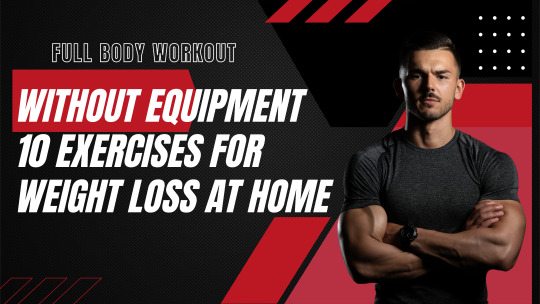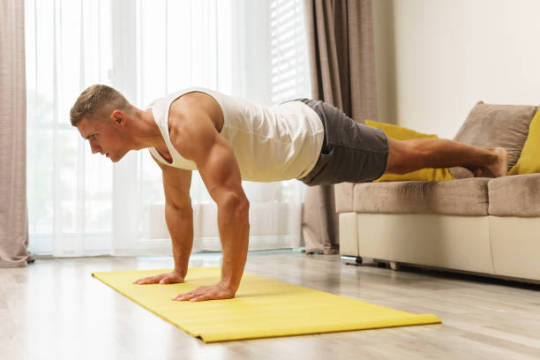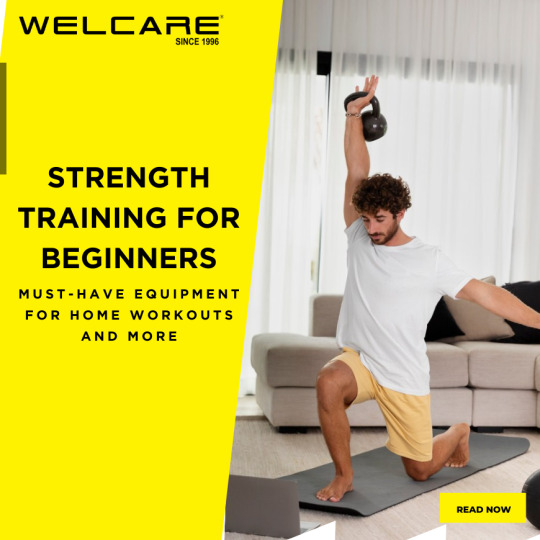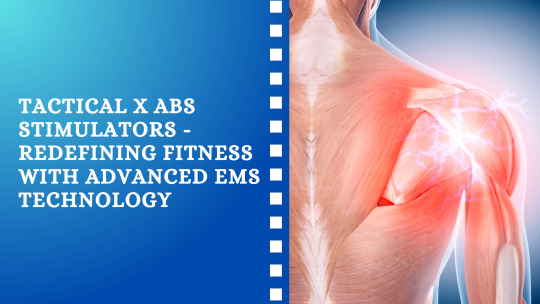#core exercises for beginners at home
Explore tagged Tumblr posts
Text
Core Exercises
#core exercises#core exercises for beginners at home#video#exercise#workout#fitness motivation#fitness#core workout
10 notes
·
View notes
Text

Functional Fitness - 12 Fitness Videos
Get ready to achieve your health goals with our 12 Fitness Videos collection! This comprehensive package is designed to suit all fitness levels, whether you’re a beginner or an experienced athlete.
Key Features: Variety of Workouts: Includes a range of exercises such as strength training, cardio, and yoga, helping you improve overall fitness. Professional Guidance: Each video is led by certified trainers, ensuring you receive correct techniques and effective tips for optimal results. Easy Access: Watch the videos anytime, anywhere, making it simple to incorporate workouts into your daily routine.
Click here Fitness Improvement: These videos will help you build strength, increase flexibility, and enhance endurance. Embark on your fitness journey today with 12 Fitness Videos and start seeing the results you desire!
#Functional fitness training#At-home workout videos#Full-body workout routines#Fitness for beginners#High-intensity interval training (HIIT)#Strength and conditioning exercises#Bodyweight exercises guide#Functional fitness tips#Core strength workouts#Cardio and strength training#Flexibility and mobility exercises#Daily workout challenges#Beginner-friendly fitness routines#Workout motivation videos#Home fitness journey
2 notes
·
View notes
Text
Pilates for Beginners: An Easy At-Home Core Workout Starting Your Pilates Practice
Whether you’re new to exercise or working out regularly, Pilates is a low-impact training style that can help you build strength and stability, while Pilates is definitely a disciplined practice, it’s easy to get started with Pilates at home if you’re a beginner.
You’ve probably heard of Pilates before, but sometimes there is a bit of confusion over how it differs from other movement styles such as yoga and barre. Pilates is a training style that can be done as a full-length program, the occasional standalone session, or you can incorporate elements of Pilates within your existing routine.
Before you start, here’s a guide to why you should do Pilates, the types of Pilates you can do, and what you need to know before your first Pilates session. Read more about Pilates exercises for Beginners at home.
#what is pilates#pilates exercises#pilates for beginners#pilates class#pilates benefits#pilates at home#wall pilates#core pilates#core stretches#pilates moves#fitness#gym workout#fitness motivation#working out
3 notes
·
View notes
Video
youtube
ABS Workout For Beginners, Beginner Core Workout at Home #abs #shorts ...
How to Get a Flat Stomach in 10 Minutes a Day
The key to getting a flat stomach in 10 minutes a day is to focus on compound exercises. Compound exercises work multiple muscle groups at the same time, which is more efficient than doing isolation exercises.
Here are some compound exercises that you can do to get a flat stomach:
Squats: Squats work your quads, hamstrings, and glutes. They are a great exercise for burning calories and building muscle.
Lunges: Lunges work your quads, hamstrings, glutes, and hip abductors. They are a great exercise for targeting your lower body.
Push-ups: Push-ups work your chest, triceps, and shoulders. They are a great exercise for building upper body strength.
Pull-ups: Pull-ups work your back, biceps, and shoulders. They are a great exercise for building upper body strength.
Crunches: Crunches work your abs. They are a good exercise for targeting your abs, but they are not the most effective exercise for burning calories or building muscle.
You can do these exercises in a circuit, doing 10-12 repetitions of each exercise. Rest for 30 seconds between exercises. Repeat the circuit 3 times.
Read More : Best Way to Get 8 Pack Abs
#youtube#beginner workout#workout#6 packs#8packs#beginnerworkout#6 pack exercise#8 pack exercise#8 pack workout#6 pack workout#at home workout#at home exercise#beginner core workout#beginner workouts#beginner core workouts#beginner ab workout#beginner ab work out#ab workout for beginners#beginner ab workouts#beginner abs workout#abs workout for beginners#ab workouts for beginners#beginner home workout#beginner abs workouts
1 note
·
View note
Text
Strength Training For Beginners: Home Gym Essentials & More
Do you want to start strength training but are unsure where to begin? You're not by yourself! Various newbies are discovering the various advantages of strength training, which vary from increased muscle tone and metabolism to better general health and wellness, as at-home workouts gain popularity. However, a successful at-home training program requires possessing the right tools.
We'll go over the necessary tools that will serve as the foundation for your strength training regimen in this blog post. Everything from dumbbells and resistance bands to more sophisticated equipment like kettlebells and adjustable benches will be examined. This thorough guide will provide you the knowledge you need to set up a productive home training space, regardless of your goals—whether they be to increase muscle mass, reduce body weight, or just become more fit. Let's begin your path to more self-esteem, strength, and quality of life!
Why Strength Training Matters
Strength training for beginners requires more than just lifting weights. It promotes muscle growth, metabolism, bone density, and general health. Regular strength training can help prevent injuries, enhance mobility, and promote overall health. It also improves posture, reduces tension, and increases confidence by making mundane tasks easier.
Must-Have Equipment for Home Strength Training
Dumbbells – The Foundation of Strength Training
Resistance Bands – Small but Mighty
Kettlebells – Power, Strength & Endurance
Adjustable Bench – Unlock More Training Options
Pull-Up Bar – Your Ticket to a Stronger Upper Body
Barbells & Weight Plates – For Progressive Overload
Smart Home Gym System – The Ultimate Upgrade

How to Start Strength Training at Home
If you are new to Strength Training For Beginners, follow these steps:
Step 1: Set clear goals
Step 2: Learn bodyweight exercises first
Prior to adding weights, work on squats, lunges, push-ups, and planks. These activities provide a solid foundation.
Step 3: Implement a Beginner-Friendly Routine
Day 1: Upper Body (push-ups, dumbbell press, and shoulder press)
Day 2: Lower Body (squats, lunges, and deadlifts)
Day 3: Full-body and Core (Kettlebell Swings, Planks, and Resistance Band Workouts)
Step 4: Progress Gradually
Step 5: Track Progress & Stay Consistent
Additional Tips: Nutrition and Recovery are Important!
Strength training is more than just working out; what you eat and how you recover are as important.
Eat for Strength: Your main sources of energy should be lean protein, complex carbs, and healthy fats.
Prioritize recovery: Muscles require time to heal and strengthen. Get plenty of sleep, remain hydrated, and treat rest days seriously.
Supplements for Strength Training: While a well-balanced diet is crucial, some supplements might help you achieve your goals faster.

Common Mistakes to Avoid in Strength Training
Skipping Warm-Ups and Cool-Downs
Using incorrect form
Lifting Too Heavy Too Soon
Ignoring recovery
Not Staying Consistent
Final Thoughts
Strength training for beginners doesn't have to be difficult. You may achieve your exercise goals from home provided you have the right equipment and follow a disciplined schedule. Investing in essentials like dumbbells, resistance bands, and an adjustable bench, as well as new devices like the AI-Powered Smart Home Gym, will set you up for success.
For more information read the full blog here : https://welcarefitness.com/index.php?route=information/blogger&blogger_id=25

#beginner strength#strength training for beginners#beginner strength exercises#core strength workout for beginners#strength building for beginners#strength training at home for beginners#strength training exercises for beginners at home#strength training plan for beginners#strength training schedule for beginners#strength workout plan for beginners
0 notes
Text
Full-body workout, Pushups, Squats, Bicep Exercises, Home Workout, No-Equipment Workout, Bodyweight Exercises, Strength Training, Fitness Routine, Cardio Workout, Core Exercises, HIIT Workouts, Muscle Toning, Beginner Workouts, Advanced Workout, Workout Motivation, Exercise at Home, Fitness Challenge, Healthy Lifestyle, Personal Training.
#Full-body workout#Pushups#Squats#Bicep Exercises#Home Workout#No-Equipment Workout#Bodyweight Exercises#Strength Training#Fitness Routine#Cardio Workout#Core Exercises#HIIT Workouts#Muscle Toning#Beginner Workouts#Advanced Workout#Workout Motivation#Exercise at Home#Fitness Challenge#Healthy Lifestyle#Personal Training.
0 notes
Text
Missiles and Meal Service: The Hidden Toll of Flying in War-zones
Common occupational hazards in aviation; the not so new flight deck stressors would encompass turbulence, delayed pushbacks, and that one passanger having an issue with someone reclining their seat (this is so very common, believe me). Let’s not forget another one who thinks the seatbelt sign doesn’t apply to them while on active runway (because they are just itching for a snack they left inside their carry-on luggage in the overhead bin. Opens bin, then bag falls off on them and everyone around. SMH)
Back to business. Pilots and cabin crew flying over the Middle East lately, especially in and out of Qatar, well, there’s a new, less subtle source of anxiety: missile attacks. Who doesn’t know the news by now?
Yes, flying into Doha these days might involve dodging airspace closures, U.S. airbase targets, and the occasional Iranian and Israeli news. Glamorous, right?
Very.
While passengers worry about delayed in-flight meals and Wi-Fi speeds being too slow or disconnecting , the crew up front and in the aisles are dealing with something much much heavier: the psychological toll of flying through a region where geopolitics are very unpredictable, stormy, and always just over the horizon.

What Happened in Qatar Exactly, you ask?
In resent years, we’ve witnessed sensitive airspaces and in response, airlines have shut down their airspaces. Flights being rerouted faster than a teenager dodging chores have become commonplace, and airline dispatchers around the world had one collective panic attack.
Now just imagine this. Inflight, flight crew are prepping beverage carts while air defence systems light up the radar. Boom-Chaka-Boom! Just another day in the skies.
Cabin Pressure: Flying with a Side of Adrenaline
Yes, crew (deck crew and cabin crew) are trained to handle demarcates, but war is not an average Emmergency! It’s one thing to worry about fuel efficiency. It’s another to fly over a region where missiles are a real-time hazard.
There is a huge difference between trusting an aircraft, the team, and trusting geopolitics.
Constant anticipatory anxiety.
Hypervigilance, even on layovers.
The unsettling knowledge that their aircraft might share airspace with defense drones, military jets, and… well, more missiles.
Hospitality Meets Hostility

Cabin crew, as you know, are the face of calm, smile and all. Even so, smiling while you serve fish, beef and a gluten free meal on a flight skimming a conflict zone? That’s dark art right there.
Results:
Crew becoming emotionally disconnected from their jobs.
Guilt when evacuating people while others are left behind. 2020 clears throat!
Luxury inflight service inside a pressure cooker floating mid air at 40,000 feet while those on ground are ducking. Definately dystopian!
More Fuel, More Detours, More Fatigue
Yep! Practical stress:
Flights being rerouted to avoid hot zones, adding hours to duty time.
Longer flight hours mean more fatigue, which affects both performance and emotional bandwidth.
There’s no glamour-AT ALL in a 15 hour turnaround because there is no clearance to land.
What Airlines Are Maybe doing
Critical Incident Stress Management teams.
Therapy appointments.
Pre and post dispatch briefings.
Even so, lots of crews feel out of the loop. Why you ask?Because, you get the news that you’re flying a risky zone when you’re already on it.
Hidden Costs: Forget Fuel and Insurance
Mental Health RiskWhat It Looks LikePTSD or traumaFlashbacks, fawning, sleep interruptions, avoidanceBurnoutEmotional numbness, lack of purposeAnxietyReccuring worry, overanalysing proceduresIsolationFeeling detached and lack of support on layovers or at home
These risks don’t show up on a flight log, but hey, they impact safety, morale, and retention. We talk about maintaining aircraft fatigue limits. What about crew fatigue limits?
Where Do We Go From Here?

How about a Flight Plan for Mental Health in Conflict Zones:
Transparent Security Briefings.
Weight & balance before takeoff is paramount, so is mental health balance.
Flight Debriefs After High-Stress Flights.
Better Global Oversight, meaning ICAO, IATA and other relevant bodies must update protocols for mental wellness involving high-risk routes.
Bottom line, pilots and cabin crew are indeed professionals for they train, adapt, and make sure to get the job done. But, they are people too and not robots. People who fly into the world’s most dangerous zones with nothing more than a safety manual and nerves of steel.
We owe them patience, understanding, protection and genuine support as they navigate war zones with grit and grace.
Fly safe. Check on your crew friends, and just maybe skip the missile jokes during boarding.
Source: Missiles and Meal Service: The Hidden Toll of Flying in War-zones
3 notes
·
View notes
Text
Ditch the Gym: Build Core Strength with This 4-Move Pilates Routine
Strengthen Your Core Anytime, Anywhere with These Simple Pilates Moves Here are some engaging ideas and tips to structure your article on “You Don’t Need the Gym to Build Core Strength, Just This Four-Move Pilates Routine”: 1. Introduction: Break the Gym Myth Brief Answer:You don’t need a gym or expensive equipment to build core strength. Pilates offers an effective, low-impact alternative…
#ab exercises#abdominal exercises#active lifestyle#at-home fitness#back pain relief#balance training#beginner Pilates#better posture#body strength#core exercises#core stability#core strength#core training#daily exercise#easy workouts#exercise#fitness#fitness anywhere#fitness flexibility#fitness for all levels#fitness motivation#fitness on a budget#fitness routine#flexibility training#functional fitness#gym alternatives#health#health and wellness#healthy habits#home workouts
1 note
·
View note
Text
5 Essential Exercises for Core Strength
Having a strong core is about more than just getting those coveted six-pack abs (though that’s a nice bonus!). Your core is essential for almost every movement you make. It helps in sitting up straight. It is crucial for lifting heavy objects. It even supports maintaining good posture. A stronger core means better balance, stability, and power. And the good news? You don’t need to spend hours…
#4 best core exercises for beginners#Best core workouts at home#Core stength exercises#Core strengthing exercises for beginners#How to build core strength from nothing#Top 10 core exercises#Top 5 exercises for a sronger core at home#Top 5 exercises for a sronger core for beginners#Top 5 exercises for a stronger core
0 notes
Text
10 Best Bodyweight Exercises to Lose Fat at Home (No Equipment Needed!)
Are you looking for effective ways to burn fat and sculpt your body without stepping foot in a gym? Look no further than these 10 powerful bodyweight exercises! Combining high intensity with minimal impact, these moves are perfect for beginners and experienced exercisers alike. Remember, the key to maximizing fat loss is maintaining a calorie deficit, but these exercises will definitely help you…

View On WordPress
#beginner workout#Bicycle Sit-ups#bodyweight exercises#burpees#calorie burning#cardio exercises#circuit training#core exercises#fat loss#fitness#Forearm to Full Plank#full body workout#health#high intensity interval training (HIIT)#high knees#home workout#Lateral Lunges#lunges#motivation#mountain climbers#no equipment workout#plank variations#Plyometric Lunges#push-ups#Sit-throughs#Squat Jumps#squats#strength training#Upper Body Speed Punches#weight loss
0 notes
Text
How can I Stay Motivated to Exercise Regularly?
Remaining roused to work out routinely can be testing, yet there are procedures you can utilize to keep up with your inspiration. Here are a few hints to assist you with remaining persuaded on your wellness process:
Put forth clear and reachable objectives:
Lay out unambiguous, quantifiable, and practical objectives that you can pursue. Having an unmistakable vision of what you need to accomplish will provide you course and motivation.
Find exercises you appreciate:
Participate in exercises that you truly appreciate. Whether it's moving, cycling, swimming, or playing a game, picking exercises you find fun and drawing in will make it more straightforward to remain spurred.
Make a daily practice:
Lay out a reliable workout everyday practice by planning exercises at explicit times and regarding them as non-debatable meetings with yourself. Consistency breeds propensity, making it simpler to adhere to your activity routine.
Stir up your exercises:
Keep away from dreariness by integrating various activities and exercises into your daily practice. Attempting new exercises, investigating different wellness classes, or participating in outside exercises can keep things new and energizing.
Track down an activity pal or join a local area:
Practicing with a companion or joining a wellness local area can give responsibility, backing, and inspiration. Figuring out together or sharing your headway and difficulties can make the excursion more agreeable and assist you with remaining focused.
Keep tabs on your development:
Track your exercises, estimations, or wellness accomplishments. Seeing substantial improvement and upgrades can be unimaginably propelling and give a feeling of achievement.
Reward yourself:
Praise your achievements and accomplishments en route. Indulge yourself with little rewards that are not counterproductive to your wellness objectives, for example, a loosening up rub, another exercise outfit, or a sound and tasty dinner.
Center around the advantages:
Help yourself to remember the various advantages of normal activity, like expanded energy, further developed mind-set, better rest, and generally speaking wellbeing. Imagine what practice decidedly means for your life and remember those advantages when inspiration fades.
Stir up your current circumstance:
If conceivable, change your activity climate. Investigate different open air areas, attempt new wellness studios, or even adjust your home exercise space. A difference in landscape can assist with keeping things fascinating and forestall fatigue.
Read More:
#Exercise#Fitness#Workout#Physical activity#Exercise routines#Exercise tips#Exercise benefits#Cardiovascular exercise#Strength training#High-intensity interval training (HIIT)#Aerobic exercise#Resistance exercises#Bodyweight exercises#Flexibility exercises#Core exercises#Exercise equipment#Exercise at home#Exercise for weight loss#Exercise for beginners#Exercise for seniors#Exercise for kids#Exercise for pregnant women#Exercise for specific body parts (e.g.#"leg exercises#“ ”ab exercises“)#Exercise motivation#Exercise and mental health#Exercise and stress reduction#Exercise and weight management#Exercise for improving flexibility
1 note
·
View note
Text
What is the 5 Fastest Ways to Strengthen Your Core?
#What is the 5 Fastest Ways to Strengthen Your Core?#core workout#core exercises for women#core exercises for beginners at home#core exercises
2 notes
·
View notes
Text

How to make body fit without gym
There are many ways to get fit without going to the gym. Here are some useful tips :
Walking is a simple and effective way to improve your cardiovascular fitness, bone strength, and body fat reduction. You can walk for 30 minutes a day, or try interval walking for more intensity.
Taking stairs instead of elevators can help you burn more calories and strengthen your legs. You can start with a few floors and gradually increase the number of stairs you climb.
Bodyweight exercises such as planks, push-ups, squats, jumping jacks, and lunges can build your muscle tone, flexibility, and balance. You can do them at home with no equipment, or use household items like water bottles or furniture as weights or props.
Shadow boxing is a fun way to improve your upper body strength, coordination, and balance. You can punch at the air in front of you, or follow a video online for guidance. Don’t forget to move your feet and add some defensive moves as well.
Yoga can increase your flexibility, muscle tone, and mental well-being. You can practice yoga at home with a mat or a soft floor. There are many poses for beginners, such as tree pose or triangle pose. You can also follow a video online for instruction and inspiration.
Barre exercises are inspired by ballet and can tone your legs, core, and arms. You can use a wall, a bar, or a piece of furniture to hold on to. Some of the exercises you can try are knee lifts, ballet squats, and deep lunges.
If you want to focus on some specific areas of your body, you can try some of these exercises:
Glute bridge can help you tone your glutes, hamstrings, and lower back. To do this exercise, lie on your back with your knees bent and your feet flat on the floor. Lift your hips off the floor and squeeze your glutes at the top. Hold for a few seconds and then lower your hips. Repeat for 10 to 15 times.
Tricep dips can help you strengthen your triceps, shoulders, and chest. To do this exercise, sit on the edge of a chair or a bench with your hands on the edge and your legs extended in front of you. Slide your hips off the edge and bend your elbows to lower your body until your arms are at a 90-degree angle. Push yourself back up and repeat for 10 to 15 times.
Side plank can help you work on your obliques, core, and hips. To do this exercise, lie on your side with your elbow under your shoulder and your legs stacked. Lift your hips off the floor and keep your body in a straight line. Hold for 30 seconds and then switch sides.
Lateral raises can help you sculpt your shoulders, arms, and upper back. To do this exercise, stand with your feet shoulder-width apart and hold a pair of water bottles or books in each hand. Raise your arms to the sides until they are parallel to the floor. Lower them slowly and repeat for 10 to 15 times.
These are just some of the ways you can get fit without a gym. You can also try cycling, swimming, skipping rope, or any other activity that you enjoy and that makes you sweat. The most important thing is to be consistent and have fun! 😊
#health & fitness#health#fitness#wellness#healthcare#health is wealth#healthy living#health tips#health and wellness#healthy lifestyle#tumblr milestone#health & beauty#health & wellness
62 notes
·
View notes
Text

Strength Training For Beginners: Home Gym Essentials & More
Do you want to start strength training but are unsure where to begin? You're not by yourself! Various newbies are discovering the various advantages of strength training, which vary from increased muscle tone and metabolism to better general health and wellness, as at-home workouts gain popularity. However, a successful at-home training program requires possessing the right tools.
We'll go over the necessary tools that will serve as the foundation for your strength training regimen in this blog post. Everything from dumbbells and resistance bands to more sophisticated equipment like kettlebells and adjustable benches will be examined. This thorough guide will provide you the knowledge you need to set up a productive home training space, regardless of your goals—whether they be to increase muscle mass, reduce body weight, or just become more fit. Let's begin your path to more self-esteem, strength, and quality of life!
For more information read the full blog here : https://welcarefitness.com/index.php?route=information/blogger&blogger_id=25
#beginner strength#strength training for beginners#beginner strength exercises#core strength workout for beginners#strength building for beginners#strength training at home for beginners#strength training exercises for beginners at home#strength training plan for beginners#strength training schedule for beginners#strength workout plan for beginners
0 notes
Text
Tactical X Abs Stimulators - Redefining Fitness with Advanced EMS Technology

In today’s world, finding the time and motivation for regular workouts can be a challenge. Many fitness enthusiasts seek innovative solutions to enhance their workouts and maximize results. Enter Tactical X Abs Stimulators, a revolutionary device that uses Electrical Muscle Stimulation (EMS) technology to help sculpt and strengthen the abdominal muscles without the need for strenuous exercise.
But does EMS technology really work? And how does Tactical X stand out from the rest? Let’s explore the science behind EMS, its benefits, and why Tactical X Abs Stimulators are redefining fitness.
Understanding EMS Technology in Fitness
Electrical Muscle Stimulation (EMS) is a scientifically backed technology that has been used in physical therapy, rehabilitation, and sports training for decades. The technology works by sending electrical impulses to muscle fibers, causing them to contract just as they would during exercise. This stimulation can help enhance muscle tone, improve strength, and support recovery.
Tactical X Abs Stimulators harness this technology to target the core muscles, promoting muscle growth and endurance without the need for crunches or sit-ups. This makes it an excellent option for individuals looking for an efficient and convenient way to strengthen their midsection.
Benefits of Tactical X Abs Stimulators
1. Convenient and Time-Saving
One of the biggest advantages of Tactical X is its ability to provide an effective abdominal workout anytime, anywhere. Whether you’re at home, in the office, or traveling, you can wear the stimulator and let it do the work while you go about your day.
2. Enhances Muscle Activation
Unlike traditional exercises that rely on voluntary muscle contractions, Tactical X Abs Stimulators engage deeper muscle fibers, leading to enhanced toning and strength development.
3. Complements Your Workout Routine
Tactical X Abs Stimulators are not meant to replace traditional workouts but rather to enhance them. Athletes and fitness enthusiasts can use the device before, during, or after workouts to improve muscle endurance and recovery.
4. Supports Recovery and Rehabilitation
EMS technology is often used in physical therapy to aid muscle recovery and reduce soreness. Tactical X can help alleviate muscle fatigue, making it a valuable tool for post-workout muscle relaxation.
5. Easy to Use
The Tactical X Abs Stimulator features adjustable intensity levels, allowing users to customize the experience based on their fitness goals and comfort level. Simply strap it on, select your desired intensity, and let the device do its job.
Who Can Benefit from Tactical X Abs Stimulators?
Busy professionals who struggle to find time for the gym.
Fitness enthusiasts looking to complement their workout routine.
Individuals recovering from injuries who need gentle muscle stimulation.
Beginners who want to start engaging their core muscles.
Final Thoughts
Tactical X Abs Stimulators bring a modern and effective approach to abdominal training, making fitness more accessible and convenient. While they are not a magic solution for weight loss, they can enhance muscle activation, improve toning, and support recovery when used consistently alongside a balanced diet and exercise routine.
Ready to take your core training to the next level? Tactical X Abs Stimulators may be the game-changer you’ve been looking for!
2 notes
·
View notes
Text
Missiles and Meal Service: The Hidden Toll of Flying in War-zones
Common occupational hazards in aviation; the not so new flight deck stressors would encompass turbulence, delayed pushbacks, and that one passanger having an issue with someone reclining their seat (this is so very common, believe me). Let’s not forget another one who thinks the seatbelt sign doesn’t apply to them while on active runway (because they are just itching for a snack they left inside their carry-on luggage in the overhead bin. Opens bin, then bag falls off on them and everyone around. SMH)
Back to business. Pilots and cabin crew flying over the Middle East lately, especially in and out of Qatar, well, there’s a new, less subtle source of anxiety: missile attacks. Who doesn’t know the news by now?
Yes, flying into Doha these days might involve dodging airspace closures, U.S. airbase targets, and the occasional Iranian and Israeli news. Glamorous, right?
Very.
While passengers worry about delayed in-flight meals and Wi-Fi speeds being too slow or disconnecting , the crew up front and in the aisles are dealing with something much much heavier: the psychological toll of flying through a region where geopolitics are very unpredictable, stormy, and always just over the horizon.

What Happened in Qatar Exactly, you ask?
In resent years, we’ve witnessed sensitive airspaces and in response, airlines have shut down their airspaces. Flights being rerouted faster than a teenager dodging chores have become commonplace, and airline dispatchers around the world had one collective panic attack.
Now just imagine this. Inflight, flight crew are prepping beverage carts while air defence systems light up the radar. Boom-Chaka-Boom! Just another day in the skies.
Cabin Pressure: Flying with a Side of Adrenaline
Yes, crew (deck crew and cabin crew) are trained to handle demarcates, but war is not an average Emmergency! It’s one thing to worry about fuel efficiency. It’s another to fly over a region where missiles are a real-time hazard.
There is a huge difference between trusting an aircraft, the team, and trusting geopolitics.
Constant anticipatory anxiety.
Hypervigilance, even on layovers.
The unsettling knowledge that their aircraft might share airspace with defense drones, military jets, and… well, more missiles.
Hospitality Meets Hostility

Cabin crew, as you know, are the face of calm, smile and all. Even so, smiling while you serve fish, beef and a gluten free meal on a flight skimming a conflict zone? That’s dark art right there.
Results:
Crew becoming emotionally disconnected from their jobs.
Guilt when evacuating people while others are left behind. 2020 clears throat!
Luxury inflight service inside a pressure cooker floating mid air at 40,000 feet while those on ground are ducking. Definately dystopian!
More Fuel, More Detours, More Fatigue
Yep! Practical stress:
Flights being rerouted to avoid hot zones, adding hours to duty time.
Longer flight hours mean more fatigue, which affects both performance and emotional bandwidth.
There’s no glamour-AT ALL in a 15 hour turnaround because there is no clearance to land.
What Airlines Are Maybe doing
Critical Incident Stress Management teams.
Therapy appointments.
Pre and post dispatch briefings.
Even so, lots of crews feel out of the loop. Why you ask?Because, you get the news that you’re flying a risky zone when you’re already on it.
Hidden Costs: Forget Fuel and Insurance
Mental Health RiskWhat It Looks LikePTSD or traumaFlashbacks, fawning, sleep interruptions, avoidanceBurnoutEmotional numbness, lack of purposeAnxietyReccuring worry, overanalysing proceduresIsolationFeeling detached and lack of support on layovers or at home
These risks don’t show up on a flight log, but hey, they impact safety, morale, and retention. We talk about maintaining aircraft fatigue limits. What about crew fatigue limits?
Where Do We Go From Here?

How about a Flight Plan for Mental Health in Conflict Zones:
Transparent Security Briefings.
Weight & balance before takeoff is paramount, so is mental health balance.
Flight Debriefs After High-Stress Flights.
Better Global Oversight, meaning ICAO, IATA and other relevant bodies must update protocols for mental wellness involving high-risk routes.
Bottom line, pilots and cabin crew are indeed professionals for they train, adapt, and make sure to get the job done. But, they are people too and not robots. People who fly into the world’s most dangerous zones with nothing more than a safety manual and nerves of steel.
We owe them patience, understanding, protection and genuine support as they navigate war zones with grit and grace.
Fly safe. Check on your crew friends, and just maybe skip the missile jokes during boarding.
Source: Missiles and Meal Service: The Hidden Toll of Flying in War-zones
3 notes
·
View notes
Text
I noticed theres not a huge fitness/gym community on Tumblr, but here's my beginner guide to getting fit at home in case anyone's interested. Best to start now so you'll look good for summer. Some exercises require dumbbells, but you can get creative with that. Hold a heavy book while squatting or curl a can of seltzer for biceps.
1) Workout
Upper body (repeat 2x a week):
10 pushups x2 - do them against a wall or leaning on a table/chair to make it easier.
12 standing dumbbell row x3
12 bicep curls x3
20 shoulder taps x3 (10 each side)
Lower body (repeat 2x a week):
Hold weight to increase the difficulty of these exercises.
20 lunges x 3 (10 each side)
15 squats x 3
15 calf raises x 3
15 glute bridges x 3
Core (repeat 1-2x a week):
Grab a mat or a rug and rest 20 sec between each exercise
15 crunches
10 leg raises
12 v-ups
20 russian twists (10 each side)
Repeat x3
Rest days:
Stay active. Walk to a coffee shop, go on a hike, maybe shoot a basketball around with your friend. Burning calories doesn't have to be suffering on a long run.
2) Nutrition
Even if you decide you don't want to work out, if you figure out your diet, you will still look like a completely different person in a few months.
First, go online to calculate your daily maintenance calories. If you want to lose weight, subtract about 500 calories from that to find how much you should eat per day. To gain weight, add 500 calories. If you are happy with your weight, eat your daily maintenance calories every day, but work on the quality of your food. I recommend the MyFitnessPro app (its free) to help you track your meals and make sure you're getting all the nutrients you need every day.
To build muscle, take your weight in lbs, multiply by 0.5-0.7, and thats the amount of protein (in grams) you should be eating per day.
Good sources of protein include: chicken, Greek yogurt, protein shakes, eggs, tofu, fish, pistachios, milk, cheese, turkey, and much much more.
Along with your protein, make sure you also have about an equal amount of carbs, and twice as many fruits and vegetables.
3) Additional health tips
Stretch daily, especially after a workout. Your joints will thank you.
Drink lots of water. 0.5 - 1 ounce per pound of bodyweight should keep you healthy.
Sleep 7-8 hours per night (depending on age). I was going to list all of the benefits of this, then realized there were way too many. Please sleep.
Walk 10,000 steps per day. Walking is one of the best methods of weight loss. It burns fat, not muscle, and it's so easy. Seriously go for walks, they're fun.
Sorry that was a lot, but you can seriously turn your life around with just a bit of effort every day. Try it for a month, I promise you will look and feel amazing. Lmk if anyone wants more tips, especially regarding gym workouts. I got a ton to share.
6 notes
·
View notes
Text
PUSH-UPS
WHAT IS A PUSH-UP?
Press-ups require no special equipment, are simple to complete, and are appropriate for people of all fitness levels. They may be done anywhere, at any time. They simultaneously work with multiple muscular groups, making them a complex exercise. They will therefore provide you with excellent exercise, aid in calorie burning, raise your heart rate, and offer you a boost of energy. Press-ups are great for more than just strengthening your arms. They also do wonders for your hips (obliques), legs (quadriceps), core (rectus abdominis), shoulders (deltoids), and chest (pectoralis major).
Here are several press-up variants that you may do to test your strength; they range in complexity from beginner to intermediate and will help you build muscle, tone, and strengthen your upper body. Like with any exercise, quality overrides numbers, so make the most out of each and every repetition by following the advice below.
HOW MANY CALORIES DO PUSH-UPS BURN?
Push-up calorie burn varies depending on genetics, weight, repetitions, and other factors. There is no magic number, and each person's experience will be unique.
DO PUSH-UPS WORK BICEPS?
Push-ups mainly target the triceps and chest. It strengthens the core, biceps, and shoulders as well. Try the following variations of press-ups to focus more on your biceps: backward-facing reverse press-ups, one-arm press-ups, and narrow press-ups.
DO PUSH UPS WORK ABS?
If you engage your core during a push-up, the exercise will help you tone your abs.
WHY CAN'T I DO PUSH-UPS?
To accomplish push-ups, one needs to have sufficient strength and practice. Try practicing regressions like the raised press-up to strengthen your upper body if you have trouble with pushups. Some persons may have physical limitations that prevent them from performing press-ups, such as joint problems or anatomy; if you have any pain, please see a doctor or other competent health professional, such as a physiotherapist.
WHAT ARE PUSH-UPS GOOD FOR?
One excellent workout to strengthen your upper body is the push-up. This is a terrific motion that you can do anywhere, whether you're working out at home or at the gym because it requires no equipment. Press-ups are a terrific workout for increasing and maintaining upper body strength, regardless of your level of experience. Several versions can help target different upper body muscles and cater to varied strength capacities.
#Fitness#Health#gym#Workout#Exercise#FitnessGoals#GymLife#FitLife#Cardio#StrengthTraining#Yoga#Pilates#Running#FitFam#HealthyLiving#FitnessJourney#FitnessMotivation#Fitspo#Fitspiration#HealthyLifestyle#Sweat#TrainHard#NoPainNoGain#FitnessAddict#FitGirl#FitGuys#nutrition
3 notes
·
View notes